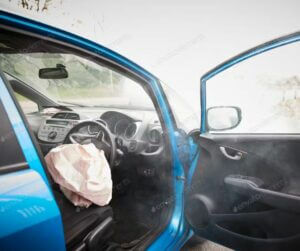Regarding Driver psychology, I have been on multiple courses, multiple times by Lisa Dorn, Fiona Fylan and Ian Edwards amongst others. They are highly qualified and experts in their fields, and I have learned so much from them over the years.
I have also learned from my Colleagues over these precious years too. Observing delivery techniques and their deep understanding of our Clients and their barriers has helped me immensely.
Without exploration and course development from the experts regarding behavioural change, Courses like Speed Awareness would not have altered format.
Some years ago, as an example, the courses were far more shocking in places gory! The findings were that this shock tactic had a short-term effect regarding changes in behaviour.
93% of injury collisions are caused by Driver or Rider error!
The wrong speed at the wrong time, not really concentrating, distracted driving, or deliberately violating the rules are some examples of barriers for all drivers. (the 7% are things like heart attacks at the wheel or a tree falling on a car rather than bad weather – bad weather would be an example of the wrong speed at the wrong time).
When we think of Driver Education there are also the ad campaigns like the seat belt “clunk-click!” campaign or the TV infomercials about drink driving. All of these are funded to increase driver awareness and as Educational Road Safety Interventions.
Why am I writing such a long blog on this subject?
… Because I believe that as a community of road safety experts, (PDIs and ADIs): we can make a bigger difference!!
I believe that if we develop our skills to understand driver psychology and behaviour more deeply we can sow the seeds for our drivers’ future.
Our Industry is usually based on a hierarchical Trainer led approach which just deals with the skills needed to pass the Driving Test. If I repeat this statistic from earlier in my blog “93% of injury collisions are caused by Driver or Rider error”; when and how do we address these things with our new drivers?
It is the basis of our need to understand the Goals for Driver Education (GDE). Not to seek to train this in sessions; but for us as Trainers to understand how and why this is so important!
Driving post-test is what the GDE helps us to address as topics during sessions.
‘Telling’ someone not to speed, drink and drive or concentrate at all times does not help a driver self-manage these daily barriers once they pass their test.
It is hard not to speed when late for something important! Or when you know there are no cameras!
It is hard to stay focused and not drive on autopilot. I find that hard too!
Telling someone to keep a 2-second gap does not help them maintain it months or years later because it rarely ‘goes wrong’! Most of the time there is no emergency.
So the Confirmation Bias of ‘I’m a good driver, I am safe’ is reinforced even when they regularly drive too close.
It is hard not to be tempted to drink and drive (for some) and even harder not to make a mistake the morning after.
Every one of us who cares about our New Drivers wants to make sure they do not end up being one of those heartbreaking deaths or seriously injured statistics!
Almost every day when working at least one person tells me that “2 Car Lengths” is a safe gap to have between you and the car in front! For any number of reasons, they have not remembered that it is a unit of time and not space that counts. There are too many occasions where people say.
“Ah yes! My instructor always told me that ‘tyres and tarmac’ is a safe following distance”!! People make mistakes. All of us.
How can we address these things in our newest drivers?
During my PDI Training, I was not given any information about human behaviour, human diversity or about how our emotions affect our driving.
… Let alone how to help a nervous driver develop strategies that reduce the effects on their performance. I have learned more and more over the years because I can see the benefits of other approaches using other fields of expertise.
Most of us are affected by life’s stresses and pressures and these will affect our choices on the road.
My training is now based on ‘evidence’ and it all relates to the individual at the wheel. They are the ones who understand their situations and barriers to driving safely.
It is about helping someone see the facts from their perspective. Understanding the benefits and costs, rather than us using negative consequences as leverage for change. I aim to avoid a fault-focused approach.
I have immense job satisfaction because my approach is solution-focused whether the driver is new or holds a full licence to drive.
Since qualifying in 2003 I began my own CPD journey in 2011.
Paying for courses and completing qualifications has helped me immensely, but most importantly it has benefited the Drivers I have the pleasure to work with every day; from the learners and full Licence holders to fleet drivers, PDIs and ADIs.
If I would try my ‘Instructional techniques’ of telling or using fact-based leverage [eg If you drive too close you will crash or don’t speed or you will get a ticket, or indeed, adapt the lesson when you need to during your Standards Check] there would be little understanding of what or how to make a lasting change.
To commit to lasting changes, we need to see the benefits (rewards or gains).
During Standards Check training, simply telling an ADI to do this, this and this during their check does not help them ‘do it’ in the moment! NOR appreciate the reasons why they might like to think about adapting their practice.
They need to practice the new techniques irrespective of a Standards Check being imminent.
Should we fix in advance of the Standards Check or fix the training we give to Drivers daily?
We as Driver Trainers need to understand the benefits for us and our customers. We can take steps to steer away from the fault focus that ‘seems’ to have worked within the industry to date.
In 2014 within the first week, ADIs came to me for some rescue training after failed attempts at their Standards Check.
Some were in the business for 20 and 30 years, were not successful on the Check.
Some came to find out what the changes meant compared to the outdated Check Test. I cherish the confidence that people had and have in me for their Professional development.
They sought me out months before I offered SC training officially. They chose me because of my outspoken passion for Coaching and Client Centred techniques.
But why was the Standards Check introduced?
It seemed a sudden overhaul to many.
Yet once again, it is all part of the three Es (Education, Engineering and Enforcement), and more specifically the Educational aspect.
Research suggests that Drivers who are trained to self-evaluate using Client Centred and Coaching approach are more likely to be able to rectify their errors and prevent a recurrence. This means that after a near miss, they adapt or approach new and unusual situations with their solution-focused processes honed while they are learning to drive.
In my opinion, this is what ‘driving experience’ gives a person; the ability to look at the evidence and risk assess that information at any given moment. My development meant that I became better at ‘getting the learning out’ from Drivers, rather than putting my information ‘into them’! No briefings, merely filling in the gaps. There is a myriad of techniques out there.
If we are to spearhead an Educational Revolution phase in Safer Driving post-test – we have to add more variety to our in-car training sessions. Telling people facts and explaining exactly what to do will be the best way to learn for only a minority of people. The majority, however, will benefit more from exciting reward-filled training sessions.
This alternate approach is what I am passionate about sharing with other Driver Trainers out there. I did not know ‘how’ to get the most out of my drivers, and it has taken me years to understand what I was missing! I have improved and gained more insights from the Fleet and Full Licence holder work. Most use a different approach for full licence holders otherwise rapport is instantly lost. In my opinion, we need to use the same techniques for learners as well as full licence holders.
Think about it; can I ever gain engagement or agreement if I tell a Delivery Driver not to speed between jobs? Work pressures are paramount in their minds. The pressure of having two or three hundred drops in the average working day must be overwhelming.
The average adult will comply and agree to requests during training interventions, and then revert to old behaviours as soon as the ‘behavioural control’ (me) has gone. While we are present, the Full Licence Holder is likely to comply until the session ends; and for no longer than that.
’Evidence-based’ training methods have more lasting results in my experience.
I have delivered industry-specific Coaching Courses in the classroom and in the car. My courses are bespoke. I adapt sessions to what the person that comes to me wants to focus on.
We are all different! Training the Trainer must be designed around the PDI or ADI. We must offer tools that can be adapted within a program, or offer specific techniques that can be chosen by a person.
I believe our industry on the whole is stuck in an instructional approach that other educational environments are not. Schools and Colleges have changed dramatically over the years.
Some Driver Trainers have changed, and many individual PDIs and ADIs deliver exceptional sessions.
But can we get even better at this?
Undeniably, New Drivers often go through an ‘expressive phase’ once they pass the test; and there will always be the thrill seeker issue. I doubt we can address those easily.
The expressive phase we might recognise in ourselves post-test. It is the day after we pass – that moment we begin to steer one-handed, window down, arm hanging out, accelerating like we stole the car. I did it all in my lame attempt to ‘look cool’!
Luckily for me, my expressive phase was limited by my own anticipated regret… my mental dialogue of “but what if….”
Another barrier to the safest driving post-test is the development of the human brain. The risk assessment part of the brain does not fully mature until around the age of 25 or so. It is not that the brain is not an adult brain – just that risk is perceived differently at this age. Not many 45-year-olds take up parkour, or cliff diving because the brain has a different perception of the ‘risks’ involved and can anticipate the regret of it all going horribly wrong.
I understand that youthful driving will not stop but most new drivers will, for the most part, aim to drive safely most of the time.
The important implication for us as Driver Trainers as I see it is that we can discuss these barriers during our sessions! Not solve or admonish but sow some seeds for that person to grow into. Limiting the expression of youth is something we can merely address not solve.
By using the healthiest of training environments to sow the seeds of:
- Managing stress when driving
- Dealing with delays
- Dealing with peer pressure
- Road rage
- Work pressures
- and the myriad of barriers that we face.
We can instigate possible coping strategies whilst they are still learning the basics. These are likely to change and alter over time. It is our nature to do this.
I do not suggest fixes will be permanent or completely effective but addressing these issues early plants the seeds for growth later.
I believe that together, we can sow the seeds in our new drivers that will help them manage, maintain, and develop their own skills post-test. Studies have shown that Drivers who are accustomed to Self-Evaluation are the ones who rectify their near misses. They have the skills to actively risk assess during their drives from day one. Coached Drivers have increased emotional intelligence and have begun to develop their coping strategies to manage nerves before their test, and anticipate remedies for dealing when they are late for a meeting.
On average:
5 people every day are killed on our roads in the Great Britain
74 people are seriously injured [loss of limb, paralysis, months in hospital]
344 slight injuries [whiplash, breaks, sprains, stitches]
As I said earlier 93% of the KSI (Killed and Seriously Injured) statistics are due to Driver or Rider error and are avoidable.
There are theories about how we ‘intend’ to behave in a certain way… and the contributory factors that help and hinder those intentions.
Our presence in the car is a constant ‘behavioral control’ for our Driver whilst learning!
There are no simple answers of course… no quick fixes to reducing death and injury on our roads!
I am part of a movement in our industry to tackle this massive safety issue.
How can we help someone think about their own choice of speed when we are not next to them? When might they make a mistake? What situations might make them feel tempted to speed?
How do we help someone post-test with fatigue or concentration lapses?
How do we help someone with their peers or kids in the car? Kids they may not even have yet?
My upcoming online Course aims to give evidence-based development techniques that will plant those seeds for post-test driving. The course is aimed at PDIs and ADIs to help them address these things early in our new drivers, rather than waiting for a Police Intervention like a Speed Awareness Course.
I hope that with our efforts and conversations early on in a Driver’s development we can lessen or prevent a crash or conviction. We will never know if it has worked or not of course. But if each of us helps prevent a single KSI statistic in our career most of us will be proud and relieved for that. For me, the effort is worth the hope that I can make a difference.
I am not delusional about how much we can do to help reduce these KSI figures, but if we work together, and develop our Profession in these ways, I believe we can make a difference!
Education, Engineering and Enforcement have been developed and enhanced for decades.
The three Es have made significant improvements to Road Safety as I have briefly outlined.
Now it is our turn to bring standards up from the ground level. To change the decades of static fault-focused approaches. To sow those seeds of self-management from the start. To delve deeper into what Client Centred Learning can do for road safety. To help new drivers develop strategies to manage the daily barriers that we all face on our roads.
We can sow the seeds for safer driving for life.
If you want to know more about my new ‘Speed’ Workshop, or my other workshops, please send me a message or follow me on Facebook https://www.facebook.com/fiona.taylor.7965692
Fiona Taylor
